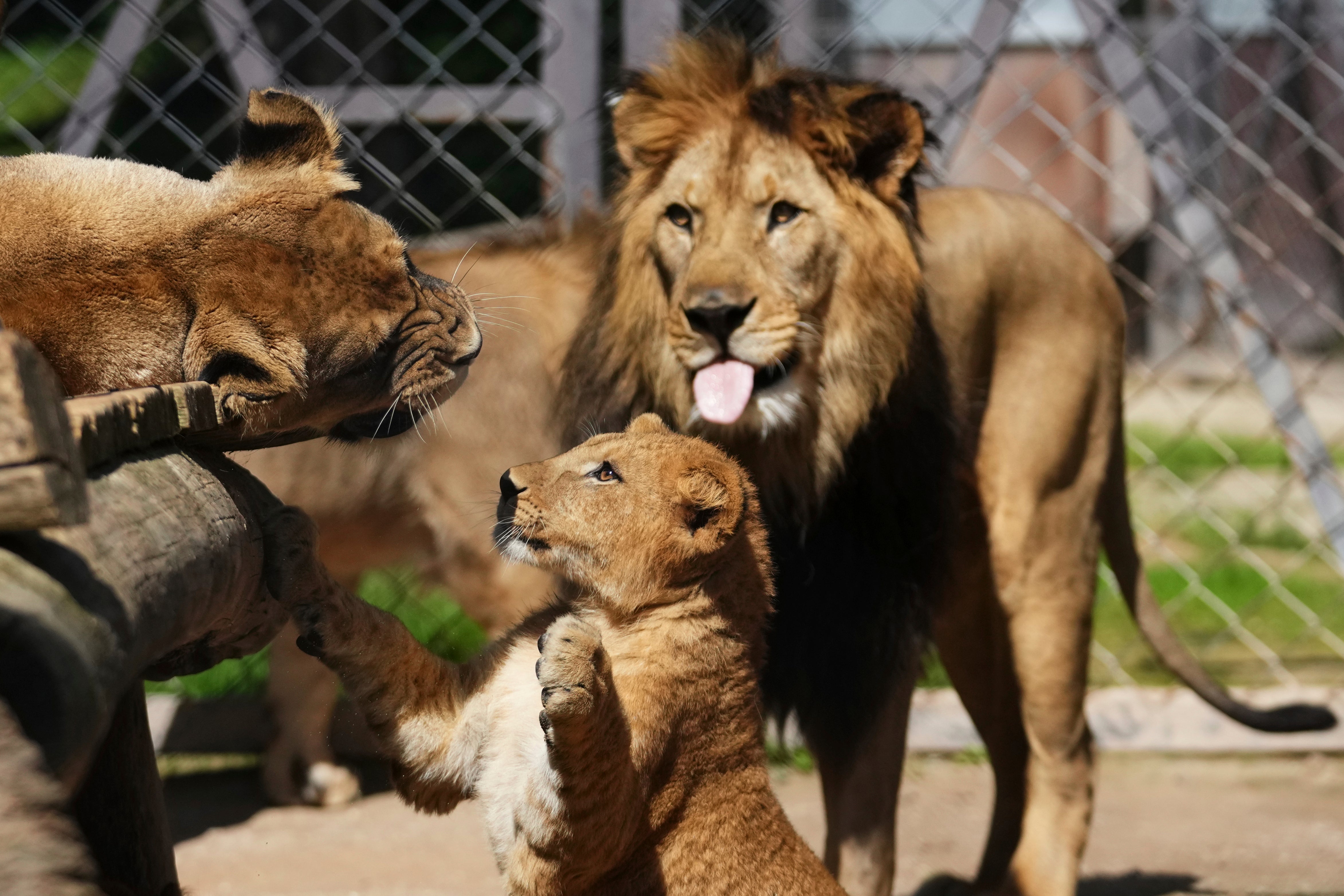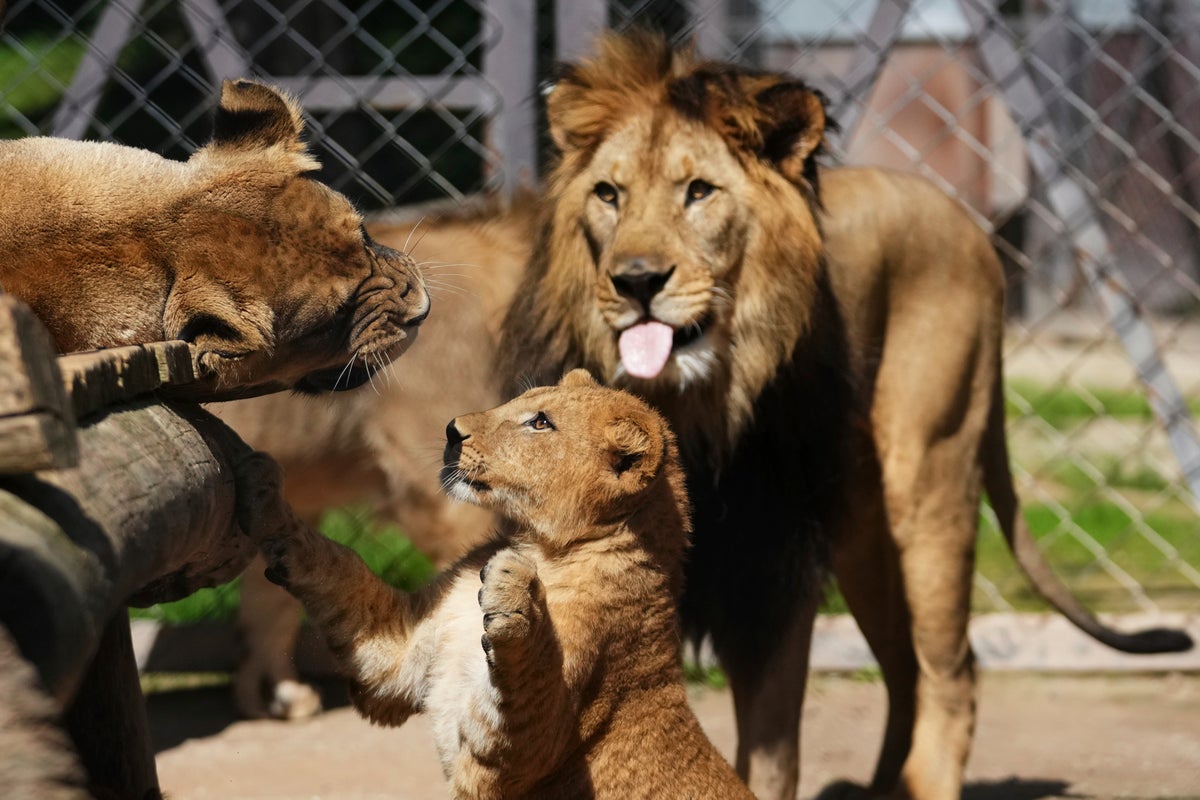Your support helps us to tell the story
From reproductive rights to climate change to Big Tech, The Independent is on the ground when the story is developing. Whether it’s investigating the financials of Elon Musk’s pro-Trump PAC or producing our latest documentary, ‘The A Word’, which shines a light on the American women fighting for reproductive rights, we know how important it is to parse out the facts from the messaging.
At such a critical moment in US history, we need reporters on the ground. Your donation allows us to keep sending journalists to speak to both sides of the story.
The Independent is trusted by Americans across the entire political spectrum. And unlike many other quality news outlets, we choose not to lock Americans out of our reporting and analysis with paywalls. We believe quality journalism should be available to everyone, paid for by those who can afford it.
Your support makes all the difference.Read more
Four Barbary lion cubs, a type of lion extinct in the wild, have been born at a Czech zoo, offering a vital boost to global conservation efforts for the rare big cat.
The arrival of the three females and one male marks a significant contribution to the small surviving population of these majestic animals.
The playful cubs were recently observed enjoying their outdoor enclosure at Dvůr Králové Safari Park, under the watchful eyes of their parents, Khalila and Bart.
However, their time at the park will be limited. As part of an international endangered species programme coordinating their survival in captivity, the cubs are destined for other participating zoos, including the Beersheba zoo in Israel.
While their immediate future lies in captivity, there is a long-term vision for the Barbary lion.
Jaroslav Hyjánek, Deputy Director of Dvůr Králové, said that preliminary steps have been taken towards a possible reintroduction of the species into its natural habitat, though he acknowledged it remains a “far distant future”.

open image in gallery
One of four Barbary lion cubs that were born recently at the Czech zoo (AP)
Once a symbol of strength, the Barbary lion, a majestic member of the Northern lion subspecies, freely roamed its native northern Africa, including the Atlas Mountains.
Human activities led to their near-total eradication; many were killed by gladiators in Roman times, while overhunting and habitat loss contributed to their later extinction.
The last known photograph of a wild Barbary lion was taken in 1925, with the last individual killed in 1942.
It is believed the final small wild populations died out in the mid-1960s.
Fewer than 200 Barbary lions are currently estimated to live in captivity worldwide.

open image in gallery
Barbary lions are extinct in the wild (AP)
Mr Hyjánek confirmed initial talks with Moroccan authorities, who have not rejected the idea of reintroduction.
A conference of experts is now planned for late this year or early 2026 in Morocco to assess the feasibility of such a plan within one of the national parks in the Atlas Mountains.
Any reintroduction would face numerous bureaucratic and practical obstacles, including ensuring the lions’ protection, a sufficient prey population, and securing cooperation and approval from local communities.
Despite the challenges, Mr Hyjánek believes such a move is worth pursuing if it proves sustainable.
“It’s important to have such a vision for any animal,” he said.
“Without it, the existence of zoos wouldn’t make sense.”
